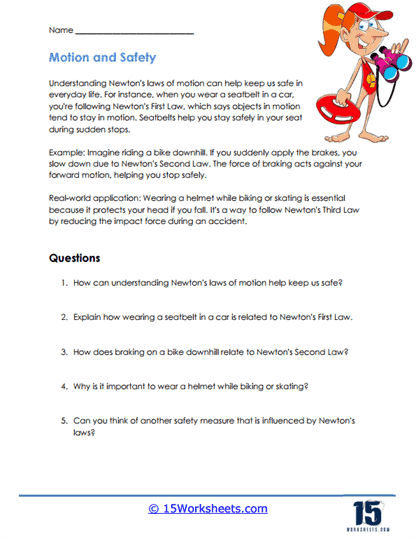Motion and Safety

Worksheet Description
The worksheet emphasizes the practical importance of understanding Newton’s laws of motion in the context of daily safety. By offering relatable scenarios such as wearing seatbelts in a car or the implications of sudden braking while riding a bike downhill, the worksheet illustrates how these fundamental laws of physics play a vital role in ensuring our safety. The connection between wearing helmets and Newton’s Third Law is also highlighted, showcasing the mitigation of impact forces during accidents. Through these examples, the sheet drives home the idea that a grasp of basic physics can inform and enhance our daily safety measures.
To apply the knowledge and skills emphasized in this worksheet, one must first internalize the principles of Newton’s laws of motion. Once these laws are understood, their implications in daily activities, especially in safety-related scenarios, become apparent. For instance, when driving, one can anticipate the effects of sudden stops on unrestrained passengers, underscoring the importance of seatbelts. Similarly, when biking or skateboarding, understanding the forces acting upon sudden braking or a fall can highlight the protective role of helmets.
This worksheet aspires to bridge the gap between theoretical physics and practical, everyday life. It aims to make students realize that Newton’s laws of motion are not just academic concepts but have direct, tangible implications for our well-being and safety. By grounding these laws in familiar scenarios, the worksheet underscores the value of understanding physics in making informed, safety-conscious decisions. Ultimately, it seeks to instill a sense of responsibility in students, empowering them with the knowledge to protect themselves and others by recognizing and responding appropriately to the forces at play in their environment.
